The Top Shelf: Case Files 056-065: "Terror from the Deep"
By Mento 0 Comments
Welcome to The Top Shelf, a weekly feature wherein I sort through my extensive PS2 collection for the diamonds in the rough. My goal here is to narrow down a library of 185 games to a svelte 44: the number of spaces on my bookshelf set aside for my PS2 collection. That means a whole lot of vetting and a whole lot of science that needs to be done, ten games at a time. Be sure to check out the Case File Repository for more details and a full list of games/links!
Case File 056: EA's Medal of Honor: Frontline
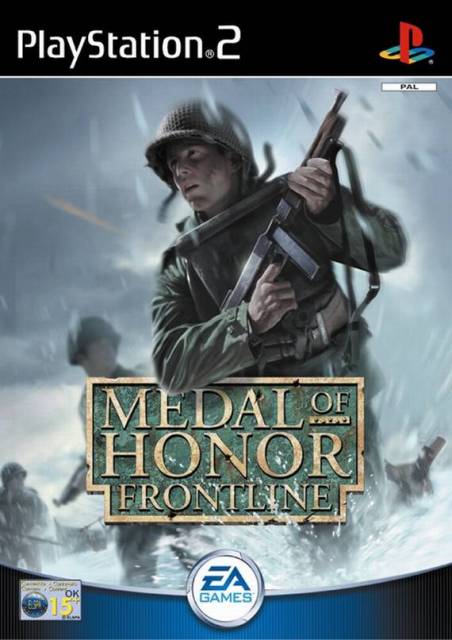
- Original Release (NA): 29/05/2002
- Not PS2 Exclusive (ported to Xbox and GameCube, remastered as a pack-in for the PS3 Medal of Honor)
Within this library is a specific strain of very un-Mento games that would be difficult to spot for anyone who... well, isn't Mento. Frightfully few people are, in fact, though perhaps that's for the best. These particular PS2 games, of which the unplayed Medal of Honor Frontline is but one of many, found their way into my collection via a bundle and are generally not the type of games that would normally fall within my comfort zone. Which is precisely why I'm giving a lot of them a shot in this feature. Sure, they may have aged terribly and don't have the benefit of nostalgia or being the type of game I'd normally be interested in, but they might lead to some fascinating rundowns further on in this feature. Medal of Honor is, of course, that one realistic military FPS series that people used to play before Call of Duty came along and ate its Oscar Mike. I don't know much about Frontline specifically except that it probably involves shooting a lot of Nazis, but I am at least sure I can spare it a few hours to see how the still-burgeoning console FPS market was coming along. Honestly, there's a big knowledge gap between Half-Life 2/TimeSplitters 2 and Modern Warfare for me, so it might help me figure out how this sub-genre went from "A" to "get to the LZ".
I'll probably regret it - no-one said I had to complete all the second-round entries, mind you - but I'm not tossing this game out without giving it the old college try. Considered.
Case File 057: The 3DO Company's Shifters
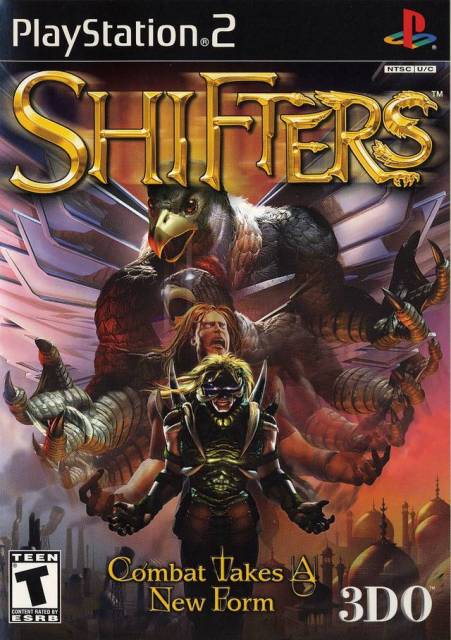
- Original Release (NA): 17/06/2002
- PS2 Exclusive!
Wasn't too impressed with last week's The 3DO Company's submission GoDai: Elemental Force, but Shifters is marginally better. A sequel to the Warriors of Might & Magic spin-off game, which unfortunately is not the fun physics one with all the kicking, Shifters drops the sweet candy shell that is the M&M license from its title and opts for a shapeshifting gimmick for its burly, monosyllabic hero's second outing. It's not the worst idea for a sequel hook, but hardly the most original. I've got kind of a weird but pointless story about this one: back when I was writing game FAQs for... GameFAQs, I would peruse the list of bounties on offer - small money prizes put up by visitors of the site desperate for someone to write a walkthrough for specific games - and got stumped on Shifters for months. The game was so abstruse (or so awful) I couldn't even get to the end let alone write a comprehensive enough walkthrough. It didn't help also that it was my first full FAQ for a RPG, which generally aren't recommended unless you have hundreds of hours of free time spare and/or an immunity to RSIs.
Anyhoo, suffice it to say I don't particularly care to go through all that again and thus Shifters is getting shifted from this feature tout de suite. Eliminated.
Case File 058: CyberConnect2's .hack//INFECTION
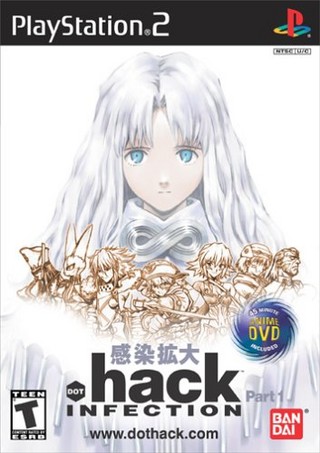
- Original Release (JP): 20/06/2002
- PS2 Exclusive!
Boy, the .hack games. They seemed like such a cool idea in the abstract, with its four-part story and realistic fake MMORPG gameplay, but the actual games were kinda bad and repetitive. I liked how the series would entice players to glitch the game-within-a-game as a last resort for survival, inviting potentially even greater harm on themselves in the future, and the actual story stuff isn't too bad. It certainly moves faster than the anime. The way you'd be introduced to characters in the game through chatlogs and online profiles rather than a few lines of dialogue in the local tavern was a neat touch, and I liked the way the MMO characters often reflected the players behind them in certain telling ways, something that the anime does quite well also (though again it should be noted that the anime moved like molasses and was often a chore to watch, IMO IIRC LFG). I particularly liked the western Otaku who found his way onto the Japanese servers and built his character to closely resemble Toshio Mifune's titular character from Yojimbo (he might've actually named his character Yojimbo, come to think of it) and kept asking the protagonist various questions about historical and modern Japanese culture that belied his status as a foreigner. I'd make fun of the guy, but I'm the one pretending to be a Japanese teenager in a fake MMO, so... let he who is not an anime dork cast the first shade, as I'm sure that expression goes.
I recall completing the first one and then getting a few hours into the second before I realized that I was in no way, shape or form ready for the long-haul this series would require, along with two more full retail purchases. We'll be seeing the sequel very soon - it's almost like self-proclaimed "merchandizing experts" Bandai cynically stretched a single game's worth of content across four titles and released them all in quick succession, if you can imagine that - but it's not a series I have any kind of attachment towards. Especially when the PS2 is already crowded with some of the greatest JRPGs ever made. Eliminated.
Case File 059: KCET's Silent Hill 2 Director's Cut
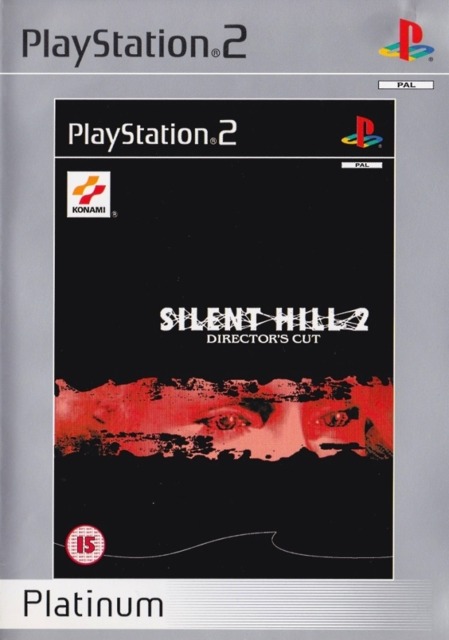
- Original Release (JP): 04/07/2002
- Not PS2 Exclusive (weird story with this one, I'll explain more below)
One of the many games in my PS2 collection that probably doesn't require an introduction, so let's get into why Silent Hill 2 is going to be a problematic one to process in this contest. The first snafu is that I'm still not entirely sure if I like this or the third one better. The 2 has the best drama, the best script and probably the best role of Silent Hill itself as it serves purely to symbolically punish James by manifesting as his own personal Tartarus. Speaking of underworlds, I forget what chapter of which Biblical book speaks of Hell as a location where the penitent create the tools of their own torment through the guilt and shame they feel for their immoral actions up on Earth. It might well have been Dante, except he had more of a weird bee in his bonnet about idolaters and betrayers. At any rate, there's this ecclesiastical theory that the demons and ol' Lucy aren't so much the aggressors but fellow damned beings simply serving a thankless role of torturing only those who seek to be tortured, and Silent Hill 2 plays around with that idea with its distressed protagonist and his strained relationship with his once mostly dead, now entirely dead wife. It's the sort of game that inspires psychological essays out the wazoo, and that's sufficient enough high praise without stacking on top its wonderful oppressive atmosphere, tense sequences and the most memorable triangular foes outside of a Geometry Wars.
The other problem here is that the copy I own is the European Director's Cut, and therein lies an excuse to elaborate on some weird Silent Hill 2 release history. The game originally came out on PS2 in 2001, and was one of the first few bona fide breakout hits during the console's nascency. I recall at the time it was lauded for its visual effects, including its facial animations and a thick but just about transparent fog effect that would've been impossible on the PS1 (and, as it turned out, tricky for the HD remaster also, but let's not get into that just yet). Demand convinced Konami to put out an Xbox version with added content - a special prologue chapter starring the mysterious femme fatale Maria - which was then ported back to the PlayStation 2. In the US, this version didn't get a special name; they just released it as Silent Hill 2 again with no hint to its added content and only the off-putting "Greatest Hits" banner and alternate box art for reasons I cannot fathom. Maybe Konami was practicing marketing games in the absolute worst way imaginable in preparation for their more recent fiascos. At least we Euros got a hint something was up with that "Director's Cut" subtitle. It does mean, however, that this is a port of an Xbox remake of a PS2 original, which is confusing my Exclusivity Tilt bonus something terrible. Since I'm not going to settle my Silent Hill 2 vs Silent Hill 3 hash today, it might be prudent to send both to the second round and think about a special compare and contrast feature for the two, like what I'm planning for Final Fantasies X and XII. Considered.
Case File 060: SCE Japan's Ape Escape 2
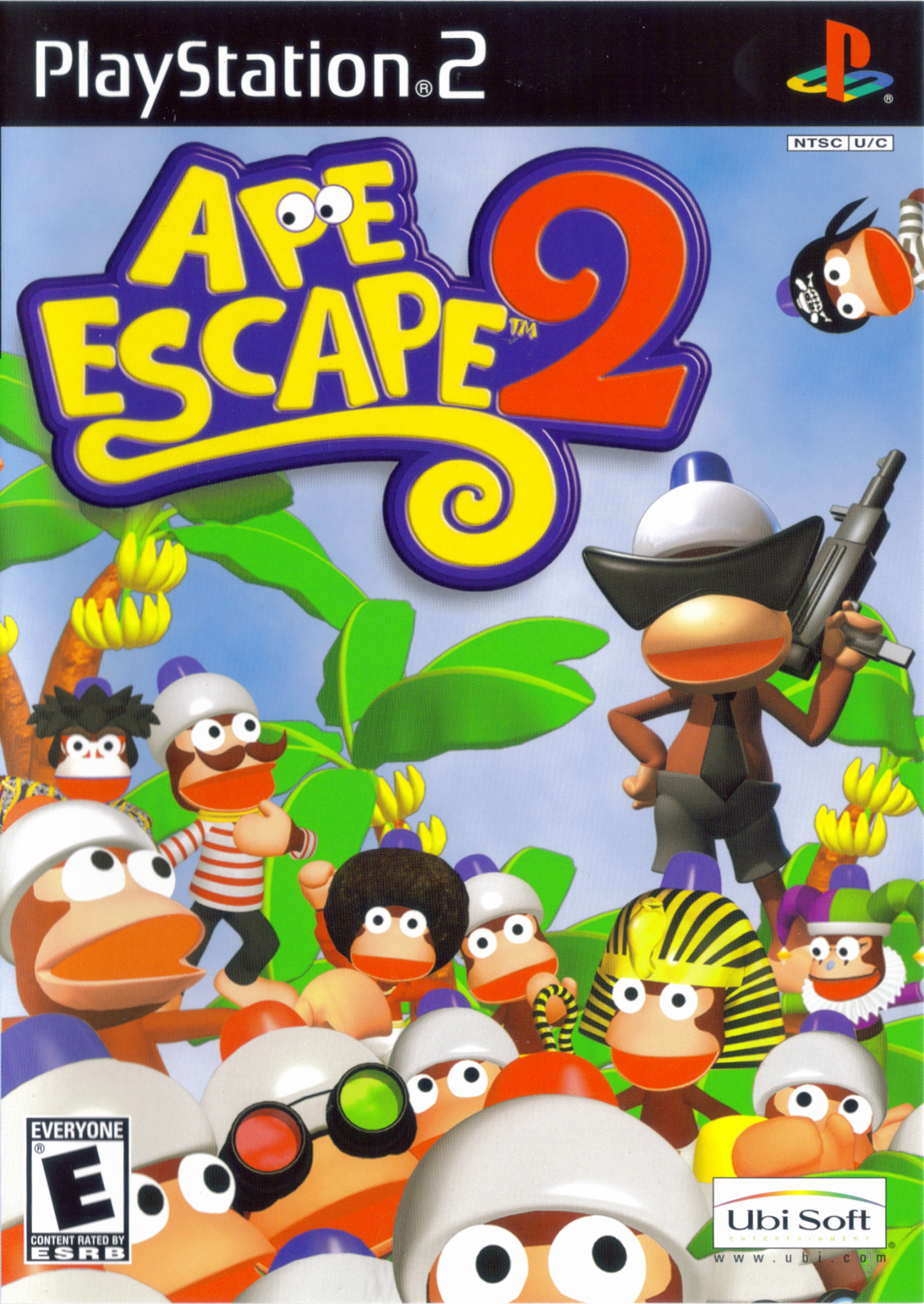
- Original Release (JP): 18/07/2002
- PS2 Exclusive!
A little less contentious is my sheer adulation of the Ape Escape games, and for the second game in particular. The first was a wonderful surprise, though a little awkward as one of the earliest console games to employ both analog sticks for movement and actions respectively. By the time the second rolled around, you not only had a better handle on this particular control scheme but the game was packed with additional types of monkey to catch (the series has never been entirely clear on whether they're apes or monkeys), new devices with which to trick monkeys like a rad RC car, and a whole mess of collectible gubbins to procure from a gatchapon machine between levels. In some ways that device pre-empted the equally captivating trophy machine of later Smash Bros games. My love of RPGs is fairly well established at this point, but platformers - especially 3D ones - are a close second in my predilections, and Ape Escape 2 along with Jak and Daxter and a few other big names to debut shortly on this feature were huge deals for me. I was worried I'd never find something on the PlayStation 2 to approach Rare's N64 output, especially with the meager offerings the original PlayStation presented (like I'm going to be sated moving from Banjo-Kazooie to Croc: Legend of the Gobbos...), but the PS2 kept supplying me with pleasant surprises in that regard. There's a reason I'm building a whole year-long feature around this system, after all.
Maybe I'm just a little concerned that the vast majority of the final shelf tally will be JRPGs if I don't get more proactive with other genres, or maybe I just love Ape Escape so much that I'm ensuring the first one to come along will be guaranteed a place, but there's no way on the planet of the apes formerly known as Earth that Ape Escape 2 isn't one of my forty-four favorite PlayStation 2 games. Approved.
Case File 061: SCE San Diego's The Mark of Kri
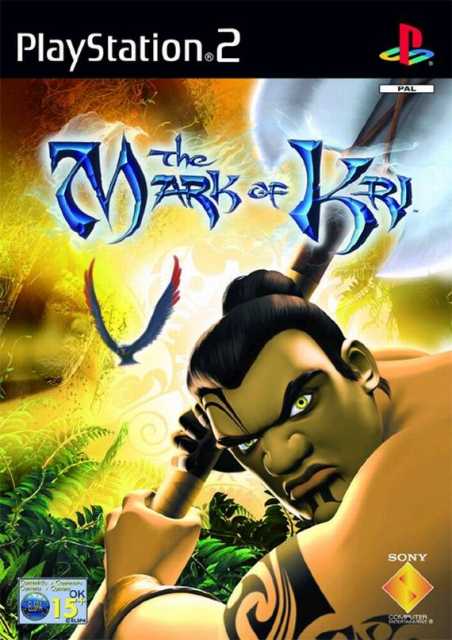
- Original Release (NA): 29/07/2002
- PS2 Exclusive!
I always get The Mark of Kri confused with Rygar: The Legendary Adventure, despite the fact one clearly has diskarmors in it and the other does not. The Mark of Kri is more of a proto-God of War that builds its world from Polynesian folklore sorta like that recent Moana movie, and like the Moana movie features a burly, tattooed warrior destined to become a God through his noble deeds. I can't say I ever got too far into this game, but I don't actually remember it being bad. The visuals were distinctive - the project apparently included a lot of traditional animators - and the game balanced combo-heavy combat and environmental puzzles in a format that would become very familiar to Sony console owners in this generation and the next. Yet, for the longest time I could've sworn this game involved hitting people with yo-yos (hence the Rygar confusion) and screenshots don't seem to corroborate that at all.
You know what that means, folks. A game I can barely remember beyond knowing that it didn't suck too horribly? That's got "second round entry" written all over it. Considered.
Case File 062: Arika's Everblue 2
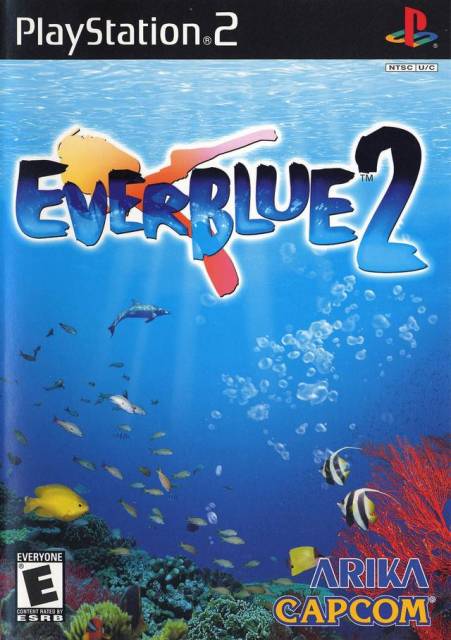
- Original Release (JP): 08/08/2002
- PS2 Exclusive!
Everblue 2 is notable for being one of my favorite PS2 games that I played many years after the PS2's decline. I'd like to think that I am capable of reviewing the games I've chosen to send along to the second round with a certain amount of leniency for their antiquity, given that the march of game design evolution is as prevalent and integral to one's enjoyment of modern games as the many years of pure technological progress - it's a big part of the reason why Indie games that superficially resemble those of yesteryear can still receive wide acclaim for their innovations and excellent gameplay. It's not so much that new games look better, but that we've spent a long time figuring out how to make them and their genres better to play. Given all that, a game that's ten or fifteen years old like the ones we're reviewing here are going to be challenging to go back to, simply because many lack the years of tweaks and improvements in those interim years. Yet Everblue 2, which is the precursor to those Endless Ocean undersea exploration games for Wii, not only aged beautifully due to its still highly distinct format but actually became one of my most treasured games for the system. If I can adore a game like Everblue 2 close to a decade after its release, I figure, then some of the unplayed games I'm moving forward to the second round are at least in with a chance for my affection also. My love of Everblue 2 is largely due to the game's loop of exploration, collecting treasure to sell, taking photos of fish, and its occasional veers into horror game territory. One thing you can do and do often in this game is explore shipwrecks, and these are always tensely presented in near total darkness conditions as you poke around waterlogged cabins and decks for salvageable furniture and valuables while keeping an eye on your oxygen and encumbrance limits (being overencumbered drops your oxygen even faster, which ain't great). If the game had a little more verisimilitude, these shipwrecks would probably have more than a few skeletons to suddenly bump into as you swim around the dimly lit corridors, but I suspect that might actually make the game far too scary. Naturally, I'm drawn to any game that has a lot of collectin' to do, such is my illness, but Everblue 2 manages to do a lot with gameplay that would normally read as far too mundane and potentially awkward. No-one likes diving/swimming controls and worrying about oxygen meters at the best of times, and this is an entire game built around those. And yet, all the same, I found it absolutely captivating. Playing the beautiful but relatively gameplay-sparse Abzu recently reinvigorated my hope that someone will bring this genre back some day - I regret not having the chance to play the Endless Ocean games (they're bizarrely expensive now) at the time, and I feel it's a genre ripe for a comeback. Especially if you can somehow make it an open-world game in the vein of a Horizon also. Man, I'm making myself sad that this game doesn't exist yet.
If you couldn't tell from the part where I was being super effusive about Everblue 2 for five hundred words, and I will maintain to my grave that it is the second greatest thing Arika ever created after Skullomania, it's going on the shelf. Sorry, I don't make the rules. Actually, whoops, wait, no, I do. Up it goes. Approved.
Case File 063: Mucky Foot's Blade II
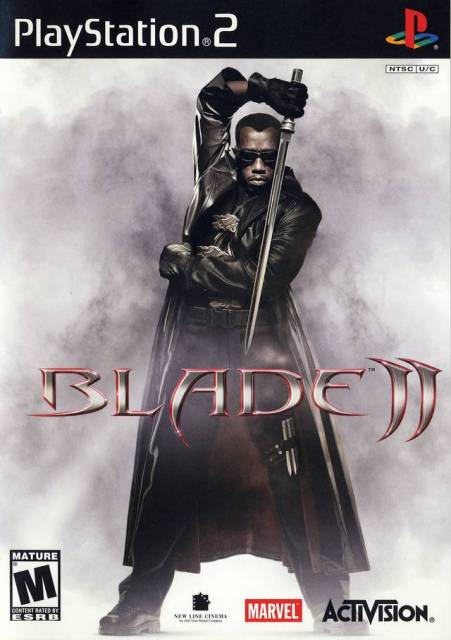
- Original Release (NA): 03/09/2002
- Not PS2 Exclusive (also released on Xbox)
All right, so let's preface this one by saying that neither Blade II the motion picture or Blade II the video game based on the motion picture is all that bad. Despite having the same name, the game curiously sets itself several months after the second movie (but before the third) and features a similar plot about super vampires who threaten mankind and regular vampires alike. Despite a lot of rough edges, the game's combat actually has this fairly decent flow to it, adapting a similar control system that Ape Escape 2 has where the player directs attacks with the second analog stick while moving around with the first. This lets you control a room of aggressors coming at you from every angle, avoiding and countering hits to build a gauge that lets you pull off a state of heightened power (i.e. Blade actually bothers to take his sword out) with which to quickly eliminate stragglers and spend the time afterwards restoring your health and other finite resources by exploring the environment in preparation for the next big melee. The plot and level design's fairly forgettable, I'm preeeetty sure that isn't Wesley Snipes's voice and it might as well be a late PS1 game from how blocky and indistinct its characters look up close, but there was something to the core of the game's controls that I felt could go far. We more or less saw a version of it in Assassin's Creed and later in the Batman Arkham games, which found their own distinct but similar ways of simultaneously simplifying combat against larger groups to a few button presses at opportune intervals while maintaining a sense of stylishness in its semi-automated flourishes and finishers.
Is it good enough to hang on the shelf? Well, no, probably not. Like a few other trailblazing games on this list, what it helped eventually foster is perhaps more significant than the game itself, which was largely the type of sloppy movie tie-in you might expect from a licensed game. Not bad enough to make Blade blush, despite a certain Jeff Gerstmann from GameSpot's scathing review (whatever happened to that guy?), but definitely not top shelf material either. Eliminated.
Case File 064: Computer Artworks's The Thing
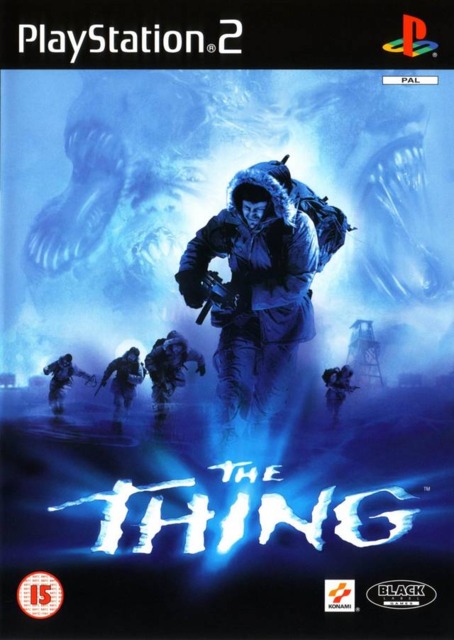
- Original Release (NA): 10/09/2002
- Not PS2 Exclusive (originally a PC game)
The Thing is sort of like Blade II, in that it's a movie tie-in that at least tries to be a little different from the lifelessly iterative norm for licensed games. The main differences are that it's a movie tie-in twenty years removed from the movie in question, so there was no need to rush in time for its release to coincide with anything, and that it's relatively well acclaimed. The game takes elements of Resident Evil (naturally, since you're trapped in a science facility full of shapeshifting biological terrors) and Half-Life, with the latter connection being most prevalent with the game's use of NPCs. NPCs will follow you around, shoot at enemies and complete orders based on their class specializations. Yet, in order to get them to do anything, you must first convince them you're not a Thing or are otherwise trying to kill them. That means giving up finite ammo and health items to appease them and being careful to not accidentally shoot them in the middle of a firefight. They can also freak out just in general, leading to their deaths and potentially the deaths of others, and many of them will eventually reveal themselves to be Things anyway. The game does right by the level of paranoia present in the movie, and though I recall the controls being clunky - it's a survival horror game after all - I thought the game's mechanics were fairly clever, or at least apropos to the source material. I also appreciate that the game's plot, which I didn't see all the way through, was a continuation of the movie that John Carpenter was happy enough with. In fact, Carpenter himself shows up later in the game briefly to dump some exposition and then get himself Thing'd. As we've seen from Giant Bomb GOTY articles in the past, he's a filmmaker with a fondness for the games medium also.
I don't think I gave the game enough of a fair shake back in the day, having never really enjoyed survival horror games up until the Fatal Frame and Silent Hill games. I have a sneaking suspicion that I still won't care for its controls and that its innovative "capricious NPCs" features might have matured into annoyances as you spend your time trying to get them to do anything useful while hideous aliens bear (but not alien bears) down upon you. Still, it might be wise to give this one another spin. You know, just sit here a while and see what happens. Considered.
Case File 065: CyberConnect2's .Hack//MUTATION
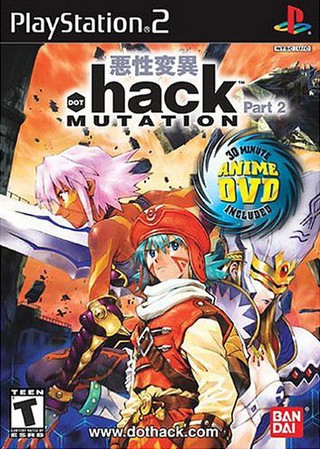
- Original Release (JP): 19/09/2002
- PS2 Exclusive!
I'm tempted to just write "see above" and point to the .hack//INFECTION entry, since the two games are more or less identical but for the increased level cap and a few new art assets. I guess I could talk more about what these games actually entail, as fake MMOs built around a buddy recruitment system. Essentially, you can type in "seed" strings of nouns and phrases which create randomized dungeons to explore named Chaos Gates. These dungeons are also given level values and some have better loot than others, so the idea within the game's universe is to have users experiment with random strings and report back to the general population whenever they find a good one. So, often, you'll have the choice between entering your own strings and risking a crappy adventure or simply checking out what's being passed around on the game's forums equivalent. Your companions will also volunteer their own strings when you ask to team up with them, ensuring that the time you spend together won't be wasted on a nothing dungeon. Of course, the game's plot will direct you to specific strings also - a lot of the progression is tied to the game world glitching out in various spots as part of a larger story of a "ghost" within the game's programming. As someone who has limited control over glitched entities, you're drawn to investigate these problem areas further and is where the lion's share of the game's story happens. Often, though, you need to be the right level to approach these plot dungeons, and so that means going back to the grind. The PCs you meet, who have NPCs controlling them in a meta twist, will start telling you more about themselves the more you team up with them, so it's generally worth doing that instead of trying to solo a bunch of randomly generated locales. I mean, if you want to be done with the game in a timely manner for the next one.
Besides, if I wasn't going to qualify the first game - which I bothered to play all the way through - I'm not going to change my tune for its "sequel", which is really just the second part of a series that probably should've been released as one gigantic game. I think my sour experience with the .hack games are why I'm a little skeptical about other RPGs being released episodically to this day. Eliminated.
Results
Let's assess the damage. We have two new shelf-for-lifers with Everblue 2 and Ape Escape 2 and four new games that will enter the second round meat-grinder. I don't imagine I'll need a lot of time to figure out where I stand on Medal of Honor: Frontline, and with Mark of Kri and The Thing I just need a quick refresher. Silent Hill 2, meanwhile, will have to wait for a throwdown with Silent Hill 3 in what will be a fairly uncommon format for a second round blog. Hopefully, breaking up the single-game rundowns with these occasional battles for series superiority might lead to some hot takes and even hotter dissent in the comments. The Top Shelf is an entirely subjective process, of course, but I don't mind hearing arguments for and against my choices. We also say goodbye to the .hack games - I only bought the two, thankfully - and to Blade II and Shifters, neither of which really stood a chance.
Before we move on to the updated statistics, I want to give a shout-out to Konami's Suikoden III. I only own this game digitally, which means no case to put on the shelf unless I feel like making one, but its original release date in Japan of July 11th 2002 puts it between Silent Hill 2: Director Cut and Ape Escape 2. Thus, it would've been part of this week's batch had events shaken out differently. Maybe it's partly the passage of time causing it some ageing issues, but Suikoden III didn't resonate with me with as strongly as some of the other games in the series, especially II and V. In fact, even if I did own a copy of Suikoden III I'd probably be eliminating it for the sake of V as per my "one game per series" corollary. All the same though, it's the second best Suikoden for the PlayStation 2 and therefore pretty high up there in the system's overall best RPG rankings. Between the series's penchant for combining turn-based RPG battles, strategy war simulation and tense duels that rely on dialogue to predict the opponent's next action, and Suikoden III's particular quirk of multiple protagonists following independent but ultimately complimentary goals, it's not a game that deserves to be forgotten. You know, like Konami Europe did when it came time to release it back in the PS2's heyday. Not that I'm still bitter - I did at least get to finally play it a few years ago. (I'll no doubt have a few more of these "honorable mention" analyses for rentals and other digitally-owned games that can't for one reason or another compete with shelf spaces, if I think they're significant enough.)
Back to the shelf, this puts us at 23 qualifiers out of 65 for the second round to work its way through, and increases our metaphorical high score table to five games strong out of the total of 44 spaces up for grabs. Next week has us stay firmly in sequel country, along with a trio of big-name 3D platformer heroes making their debut in this feature. Curiously, I don't think there's a single Japanese game in this batch, nor are there really any games that most people won't instantly recognize. Good lord, is The Top Shelf selling out already?
